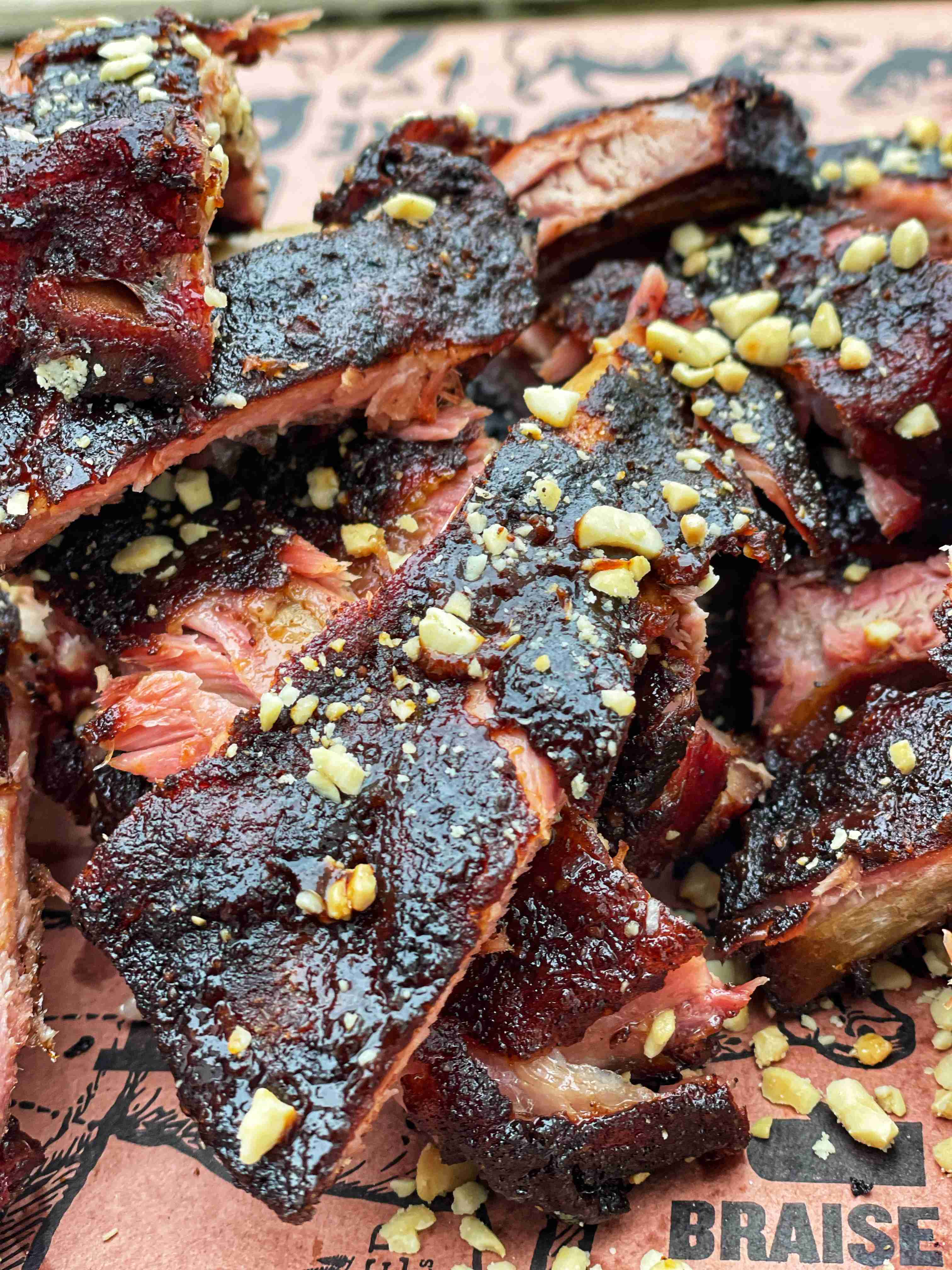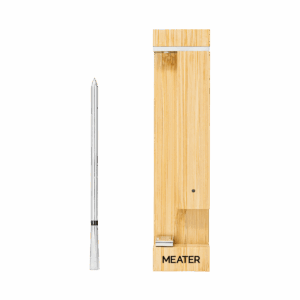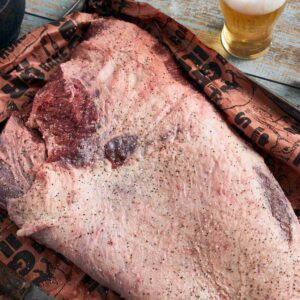
Peanut and Jam Ribs
- Medium
- Pork
Want to try a unique recipe with incredible flavours that seem like they shouldn’t work but they do? Jack from Jacks Meat Shack has brought iconic tastes from across the pond to us with amazing peanut and jam ribs. Check out how he does it below…
Cooking Method
- Preheat the grill to 135C.
- Remove the membrane from the back of the ribs.
- Brush the ribs with French mustard, creating an even coat all over.
- Evenly coat the ribs with your multi-purpose seasoning.
- Place the ribs on the grill over indirect heat and allow them to cook until the bones start to protrude at the ends and there is some flexibility in the ribs when you pick them up.
- Lay out plenty of tin foil and add two large tablespoons of butter and one tablespoon of jam before adding the ribs bone side up. If you are doing two racks you can repeat the process by stacking the ribs on top of each other.
- Wrap the foil tightly around the ribs.
- Put back on the indirect heat for roughly another hour until they’re nice and tender.
- Remove the ribs from the wrap and place back on the grill over indirect heat, using the retained juices in the foil as a marinade by brushing a thick layer onto the meat as a glaze.
- Grill for around fifteen minutes before slicing into each rib individually and enjoying with your favourite sides.
The Ingredients
- 1 rack of baby back ribs
- 2 tbsp French mustard as a binder
- Multi-purpose seasoning like Jack’s Meat Dust (enough to cover the rack)
- 1 tbsp strawberry jam
- 2 tbsp butter
Frequently Asked Questions
The best way to prevent your ribs from drying out and achieving that fall off the bone tenderness is by ensuring they are cooked over an indirect heat, tightly covered. This will keep all the juices inside the meat and stop them from escaping.
First, location. Where baby back ribs come from the top of the loin near the spine, spare ribs are taken from further down the animal close to the stomach. As a result, a rack of spare ribs are typically straighter in shape than a baby back rib rack. Spare ribs are also larger, containing longer bones and more meat than baby back ribs. The former is usually characterised by tougher meat with more fat, while the latter is leaner and often considered more tender.
Baby back ribs are pork ribs. They’re cut from the smaller vertebrae towards the rear of the animal, which is where baby back ribs get their name from. Yes, cows do have back ribs too. However, these will explicitly be labelled ‘beef ribs’ in most butchers, online butchers and restaurants. Contrary to popular belief, baby back ribs don’t come from baby pigs.


